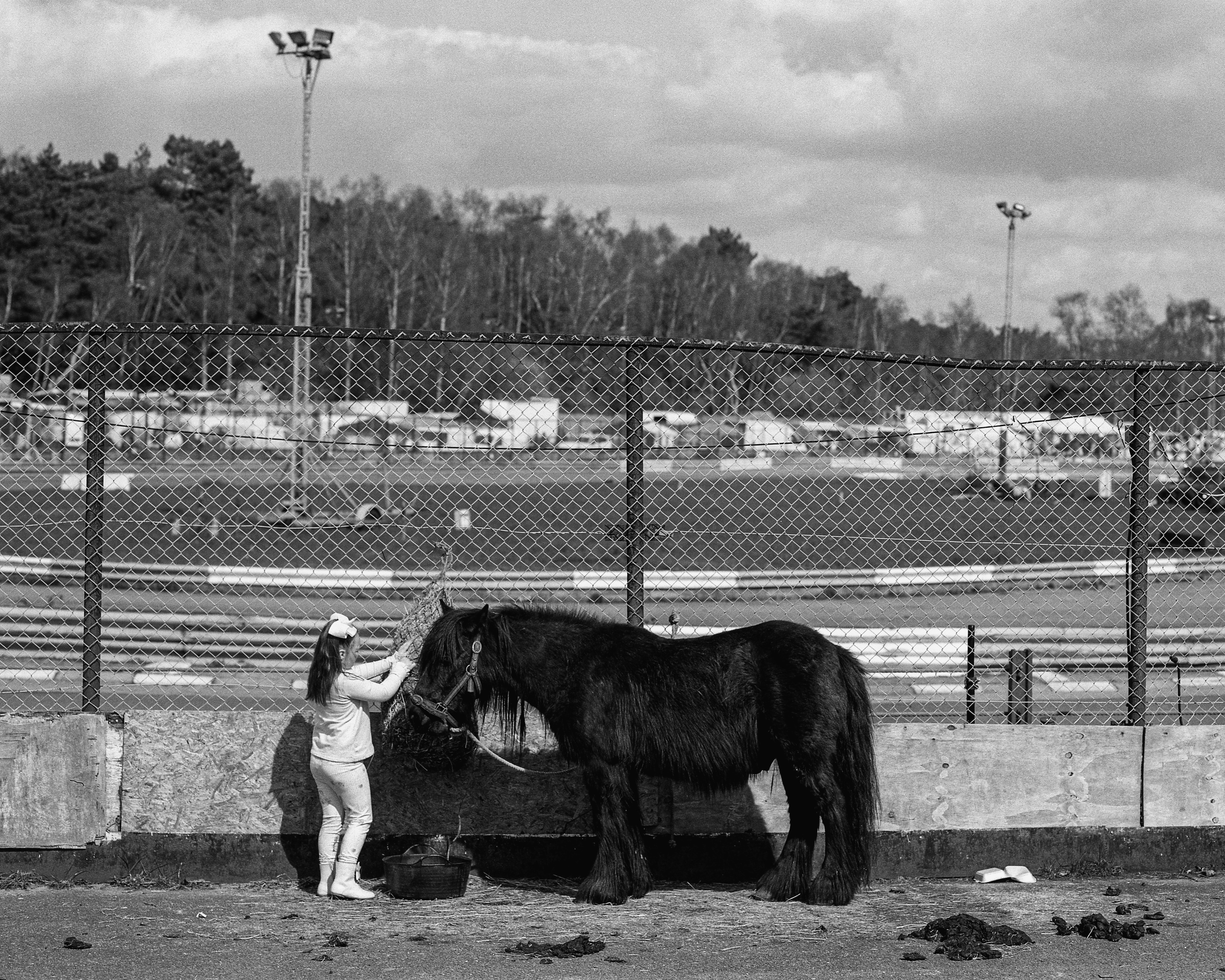






















Horse Drive
From the mid-1800s, it became a practice for travelers in the British Isles to employ a distinct type of horse for pulling their vardos—caravans in which they had recently started to live and travel. The breed's color and appearance were refined in the years following the Second World War. It is a small, solidly-built horse with cob conformation, often, though not always, piebald or skewbald. It is closely associated with Irish Travellers and English Romanichal Travellers of Ireland and Great Britain. Horse ownership holds significant cultural importance for specific families within this community. Today, the role of the horse primarily revolves around its use in the sporting and recreational industries, but traditional skills and trades such as blacksmithing and coopering still find widespread application.
In contemporary times, a new generation of Travellers and Gypsies engage in keeping, breeding, and selling horses, with horse dealing being deemed an important activity within these communities. These young horse enthusiasts uphold traditional recreational activities, including trotting and sulky racing. Sulky racing is akin to harness racing, where a cart or sulky is pulled by the horse, controlled by a driver, and the horses race at a specific trot or pace. The training and maintenance of these horses are subjects of passionate interest among the young members of this community, coupled with a deep acknowledgment of their history and culture.
The photographs presented here were captured at a recent horse fair and drive event in Southern England. The objective was to explore and document the participation of young people in smaller horse drives and fairs on the national circuit. These horse fairs have roots dating back centuries, and during these annual gatherings, Travellers and Gypsies celebrate their history and folklore, socialize, purchase traditional wares and goods, and engage in horse trading and bartering. The images were taken at one of the smaller events on the national scene. Nevertheless, the energy, history, and core values are palpable and can be enjoyed by community members and outsiders alike. It is evident that this equestrian culture is deeply embedded in the community, and a new young generation proudly takes the reins.
From the mid-1800s, it became a practice for travelers in the British Isles to employ a distinct type of horse for pulling their vardos—caravans in which they had recently started to live and travel. The breed's color and appearance were refined in the years following the Second World War. It is a small, solidly-built horse with cob conformation, often, though not always, piebald or skewbald. It is closely associated with Irish Travellers and English Romanichal Travellers of Ireland and Great Britain. Horse ownership holds significant cultural importance for specific families within this community. Today, the role of the horse primarily revolves around its use in the sporting and recreational industries, but traditional skills and trades such as blacksmithing and coopering still find widespread application.
In contemporary times, a new generation of Travellers and Gypsies engage in keeping, breeding, and selling horses, with horse dealing being deemed an important activity within these communities. These young horse enthusiasts uphold traditional recreational activities, including trotting and sulky racing. Sulky racing is akin to harness racing, where a cart or sulky is pulled by the horse, controlled by a driver, and the horses race at a specific trot or pace. The training and maintenance of these horses are subjects of passionate interest among the young members of this community, coupled with a deep acknowledgment of their history and culture.
The photographs presented here were captured at a recent horse fair and drive event in Southern England. The objective was to explore and document the participation of young people in smaller horse drives and fairs on the national circuit. These horse fairs have roots dating back centuries, and during these annual gatherings, Travellers and Gypsies celebrate their history and folklore, socialize, purchase traditional wares and goods, and engage in horse trading and bartering. The images were taken at one of the smaller events on the national scene. Nevertheless, the energy, history, and core values are palpable and can be enjoyed by community members and outsiders alike. It is evident that this equestrian culture is deeply embedded in the community, and a new young generation proudly takes the reins.